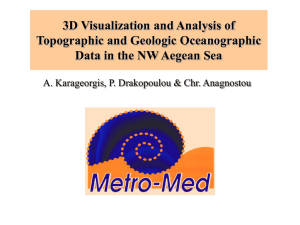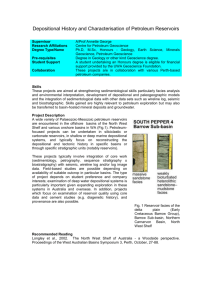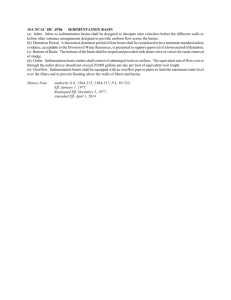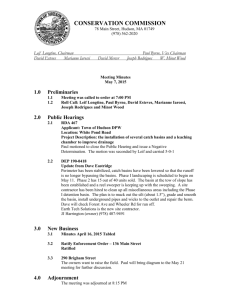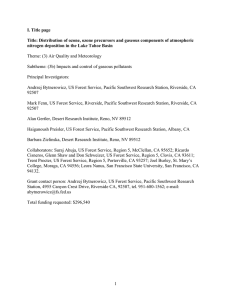Depositional Basins:-
advertisement
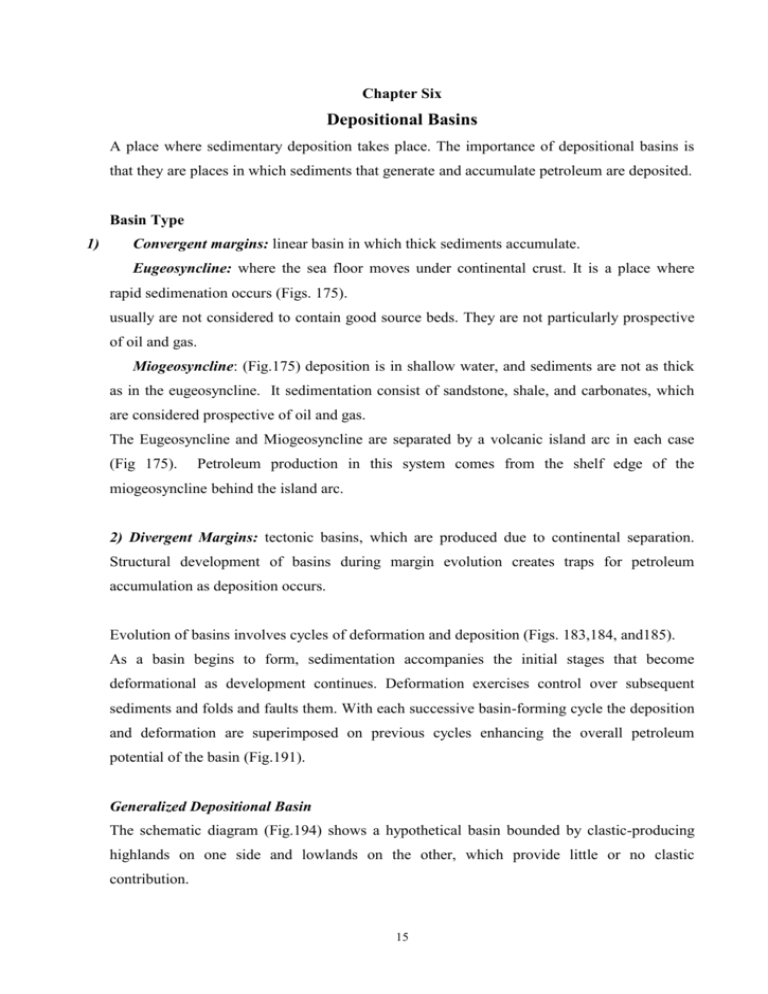
Chapter Six Depositional Basins A place where sedimentary deposition takes place. The importance of depositional basins is that they are places in which sediments that generate and accumulate petroleum are deposited. Basin Type 1) Convergent margins: linear basin in which thick sediments accumulate. Eugeosyncline: where the sea floor moves under continental crust. It is a place where rapid sedimenation occurs (Figs. 175). usually are not considered to contain good source beds. They are not particularly prospective of oil and gas. Miogeosyncline: (Fig.175) deposition is in shallow water, and sediments are not as thick as in the eugeosyncline. It sedimentation consist of sandstone, shale, and carbonates, which are considered prospective of oil and gas. The Eugeosyncline and Miogeosyncline are separated by a volcanic island arc in each case (Fig 175). Petroleum production in this system comes from the shelf edge of the miogeosyncline behind the island arc. 2) Divergent Margins: tectonic basins, which are produced due to continental separation. Structural development of basins during margin evolution creates traps for petroleum accumulation as deposition occurs. Evolution of basins involves cycles of deformation and deposition (Figs. 183,184, and185). As a basin begins to form, sedimentation accompanies the initial stages that become deformational as development continues. Deformation exercises control over subsequent sediments and folds and faults them. With each successive basin-forming cycle the deposition and deformation are superimposed on previous cycles enhancing the overall petroleum potential of the basin (Fig.191). Generalized Depositional Basin The schematic diagram (Fig.194) shows a hypothetical basin bounded by clastic-producing highlands on one side and lowlands on the other, which provide little or no clastic contribution. 15 Along the mountainous coast, source beds consisting of thick organic shale are deposited in the basin and the lagoon. Reservoir beds are deposited as barrier bars, beaches, and delta distributary channels. In lowland coast, the low clastic marine environments have clear water and are conducive to carbonate deposition (as reef organisms require clear marine water). Carbonate deposition consists of reefs on the shelf and at the shelf edge and lime mud on the shelf. Lime mud and some thick clastic shales may contain organic matter. The marine shales in the basin are potential source beds. Reefs on the shelf and shelf edge are potential reservoirs. If the marine shales transgress the reefs they can provide the seal necessary to retain the oil that they generate as source rocks. 16
